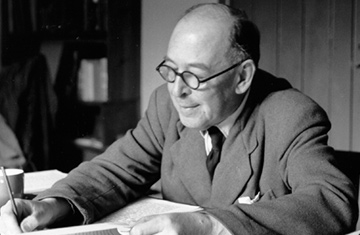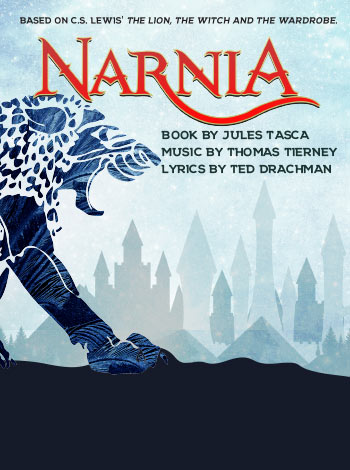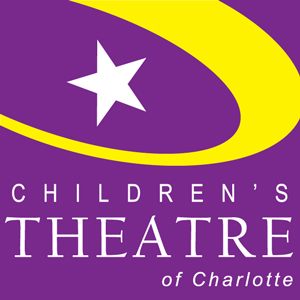Resource Guide - Narnia
Before the Show
Click on a topic to expand/hide content:
+ About the Show
+ The BIG Questions Before the Show
+ Vocabulary Enrichment
+ Activities
Creature Maker
The world of Narnia is populated by talking animals and other well-known mythological creatures that C.S. Lewis borrowed from other cultures:
+ Meet Author C.S. Lewis C.S. Lewis was an author, essayist and Christian apologist. He is best known for his children’s series—The Chronicles of Narnia.
C.S. Lewis was an author, essayist and Christian apologist. He is best known for his children’s series—The Chronicles of Narnia.
His beliefs influenced his more popular works. Though he also includes ideas of Roman and Celtic myths, there are underlying Christian notions of sacrifice in his writing. He wrote the first book in the series, The Lion, the Witch and the Wardrobe, during the Second World War. It was partly inspired by three evacuee children who came to stay at his home in Risinghurst. Lewis said the experience gave him a new perspective on the joys of childhood.
Since his death, his books and influence have continued to grow. He has been rated as one of the top English writers of all time and his books have been translated into numerous languages.
+ About the Show
Travel to a magical world filled with creatures of myth and fable where good and evil coexist. Adventure awaits four children who endeavor to help the mighty lion king Aslan save Narnia from the White Witch. Will her reign continue to bring perpetual winter across the land? Children and adults will delight in this fantastical adaptation for the entire family.
Themes: Courage, wisdom, redemption, mythology, family
+ The BIG Questions Before the Show
- Have you read the book on which this play is based? What are some differences between the play and the book? What are some differences between the play and the movie adaptation?
- If you could travel to a magical world like the Pevensie children in the story, where would you go? Would you go alone or take a friend? Why or why not?
CCSS.ELA-Literacy.SL.(3-5).2:: Ask and answer questions about key details in a text read aloud or information presented orally or through other media. CCSS.ELA-Literacy.RL.4.7: Make connections between the text of a story or drama and a visual or oral presentation of the text, identifying where each version reflects specific descriptions and directions in the text.
+ Vocabulary Enrichment
Pick three words from the list and use them in an original sentence or paragraph. You can also draw a picture, illustrating the definitions.
- manor n. a large country house surrounded by lands; an estate
- wardrobe n. a large, tall cabinet in which clothes may be hung or stored
- human n. a person as distinguished from an animal
- dominion n. control
- babbling n. the action of talking quickly and continuously in a foolish or excited way
- dissatisfaction n. the quality or state of being dissatisfied or unhappy
- Father Christmas proper n. the traditional English name for the personification of Christmas; similar to Santa Claus
- prophecy n. a prediction
- eldest adj. of the greatest age; oldest
- unnerved v. past tense: having made someone lose courage or confidence
- fortifications n. plural: a defensive wall or structure built to strengthen a place against attack
- sacrifice v. to give up something important for the sake of other considerations; often with religious implications
CCSS.ELA-Literacy.L.(K-5).4: Determine or clarify the meaning of unknown and multiple-meaning words and phrases.
+ Activities
Creature Maker
The world of Narnia is populated by talking animals and other well-known mythological creatures that C.S. Lewis borrowed from other cultures:
- Dwarfs
- Centaurs
- Fauns
- Ghouls
- Giants
- Hags
- Nymphs
- Unicorns
- Witches
- Creature Report: Students write a report as they would about animals in nature.
- Creature Journal: Have your students put themselves in the role of these creatures. Write a journal account, imagining a “day in the life” for this character.
- Draw It: Have students illustrate the creature in its habitat.
CCSS.ELA-Literacy.W.(3-5).3: Write narratives to develop real or imagined experiences using effective technique, descriptive details, and clear event sequences. NCES-VisualArts.(3-5).VA.V.3: Create art using a variety of tools, media, and processes, safely and appropriately.
+ Meet Author C.S. Lewis
 C.S. Lewis was an author, essayist and Christian apologist. He is best known for his children’s series—The Chronicles of Narnia.
C.S. Lewis was an author, essayist and Christian apologist. He is best known for his children’s series—The Chronicles of Narnia.
His beliefs influenced his more popular works. Though he also includes ideas of Roman and Celtic myths, there are underlying Christian notions of sacrifice in his writing. He wrote the first book in the series, The Lion, the Witch and the Wardrobe, during the Second World War. It was partly inspired by three evacuee children who came to stay at his home in Risinghurst. Lewis said the experience gave him a new perspective on the joys of childhood.
Since his death, his books and influence have continued to grow. He has been rated as one of the top English writers of all time and his books have been translated into numerous languages.
After the Show
Click on a topic to expand/hide content:
+ The BIG Questions After the Show
+ Activities
Frozen images
Review the events of the play with your students by writing them on the board. Ask your class what they think Narnia was like before Lucy first entered through the wardrobe. How did the children change Narnia during their time there? What do your students think will happen to Narnia after the children leave?
Now, divide the class into groups of four or five and have them create frozen pictures to retell events from the play. A frozen picture does not involve movement or talking, but illustrates the moment using the students’ bodies. These are also called tableaus. Students can be characters or items in the scene. Below are the three pictures the group will create.
Map of Narnia
Make copies of the map provided at the link, then have your students follow these directions.
+ Talk About Theatre Jobs
+ External Links
+ Recommended Reading
+ The BIG Questions After the Show
- Why do you think C.S. Lewis chose a lion to represent the character of Aslan?
- This is a story about transformation, both magical and within the personalities of the characters. What moments of transformation do you remember from the play? Are there any moments of transformation you wish to see for yourself?
CCSS.ELA-Literacy.SL.(3-5).2: Ask and answer questions about key details in a text read aloud or information presented orally or through other media. CCSS.ELA-Literacy.SL.4.1.D: Review the key ideas expressed and explain their own ideas and understanding in light of the discussion.
+ Activities
Frozen images
Review the events of the play with your students by writing them on the board. Ask your class what they think Narnia was like before Lucy first entered through the wardrobe. How did the children change Narnia during their time there? What do your students think will happen to Narnia after the children leave?
Now, divide the class into groups of four or five and have them create frozen pictures to retell events from the play. A frozen picture does not involve movement or talking, but illustrates the moment using the students’ bodies. These are also called tableaus. Students can be characters or items in the scene. Below are the three pictures the group will create.
- Narnia before Lucy’s visit
- Any moment from the play
- Narnia after the children leave
NCES-TheatreArts.(3-5).TA.AC.2: Use performance to communicate ideas and feelings. CCSS.ELA-Literacy.SL.4.2: Paraphrase portions of a text read aloud or information presented in diverse media and formats, including visually, quantitatively, and orally.
Map of Narnia
Make copies of the map provided at the link, then have your students follow these directions.
- Color the Great Eastern Ocean blue.
- Draw and label the Lamppost, north of the Western Wood.
- Draw and label the Witch’s Camp, north of the Fields of Beruna.
- Draw and label Aslan’s Camp, south of the Fields of Beruna.
- Draw and label the Stone Table, southwest of Cair Paravel.
- Draw a mountain range on the border between Narnia and Archenland.
- Fill in the rest of the map as you wish!
CCSS.ELA-Literacy.CCRA.SL.2: Integrate and evaluate information presented in diverse media and formats, including visually, quantitatively, and orally. NCESVisualArts.(3-5).VA.V.3: Create art using a variety of tools, media, and processes, safely and appropriately.
+ Talk About Theatre Jobs
Every play Children’s Theatre of Charlotte produces is created by a talented team of designers, technicians, actors, and a director. As a class, discuss what you experienced when you saw the performance.
- Name three things you noticed about the scenery. Did the scenery help tell the story? What sort of scenery would you design?
- What did you like about the costumes? Did the costumes help tell the story? What sort of costumes would you design?
- What role did lighting play in telling the story? How did the lights enhance what you were seeing?
- Talk about the actors. Were there moments you were so caught up in the story you forgot you were watching a play?
- Were there any actors who played more than one character? What are some ways you can show you are a different character?
NCES-TheaArts.(3-5).TA.A.1: Analyze literary texts and performances. NCES-TheaArts.(3-5).TA.AE.1.2: Understand how costumes [and technical elements] enhance dramatic play.
+ External Links
- In the play, Edmund asks the White Witch for Turkish Delight when he is first lost in Narnia. Learn more about the history of how this candy made its way to England, and to find a recipe to make it yourself!
- Learn more about Britain's evacuated children of World War II from the Imperial War Museum.
+ Recommended Reading
If you enjoyed the show, travel to ImaginOn or your local Charlotte Mecklenburg Library branch and check out these books. Check availability at cmlibrary.org.
- The Silver Chair by C.S. Lewis
- The Phantom Tollbooth by Norton Juster
- The Wizards of Once by Cressida Cowell
- A Wrinkle in Time by Madeleine L’engle

Based on C.S. Lewis’ "The Lion, the Witch and the Wardrobe" | Book by Jules Tasca | Music by Thomas Tierney | Lyrics by Ted Drachman | Produced by special arrangement with DRAMATIC PUBLISHING, Woodstock, Illinois





